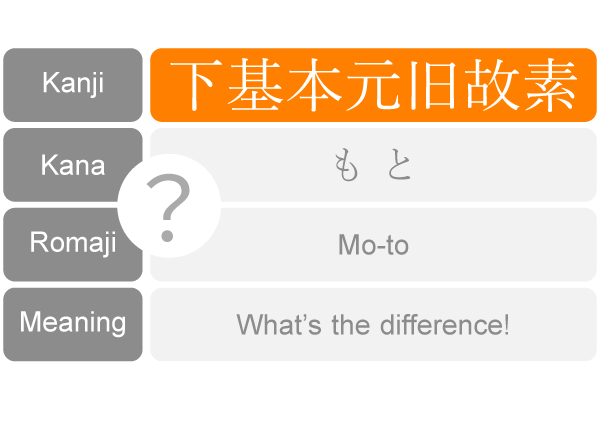List Difference もと 下基本元旧故素

List Difference もと 下基本元旧故素
Material:
Data---List Difference もと 下基本元旧故素
Commentary:
下 (Hiragana: もと Romaji: Mo-to) means “under position.”
基 (Hiragana: もと Romaji: Mo-to) means “under position” + “supporting the force.” Used when talking about the structure of object.
本 (Hiragana: もと Romaji: Mo-to) means “collected things to become the model.” Another reading 本 (ほん Ho-nn) is the information collected to become a book model.
元 (Hiragana: もと Romaji: Mo-to), 旧 (Hiragana: もと Romaji: Mo-to), and 故 (Hiragana: もと Romaji: Mo-to) all these Kanji designate the relation in time.
元 means "origin" and "ultimate starting point".
旧 means “just one step before.”
故 means “terminated” or “no future.” So, 故 implies “someone has ceased.”
素 (Hiragana: もと Romaji: Mo-to) is used only in chemistry.
Further study:
Japan Ministry of Education (文部科学省). 学習指導要領 生きる力. 2017.
Republic of Korea Ministry of Education (대한민국 교육부).
People's Republic of China Ministry of Education (中华人民共和国教育部). Tōngyòng Guīfàn Hànzì Biǎo (通用规范汉字表). 2013.
U.S. Department of Education (アメリカ合衆国教育省).

Post my Q and A